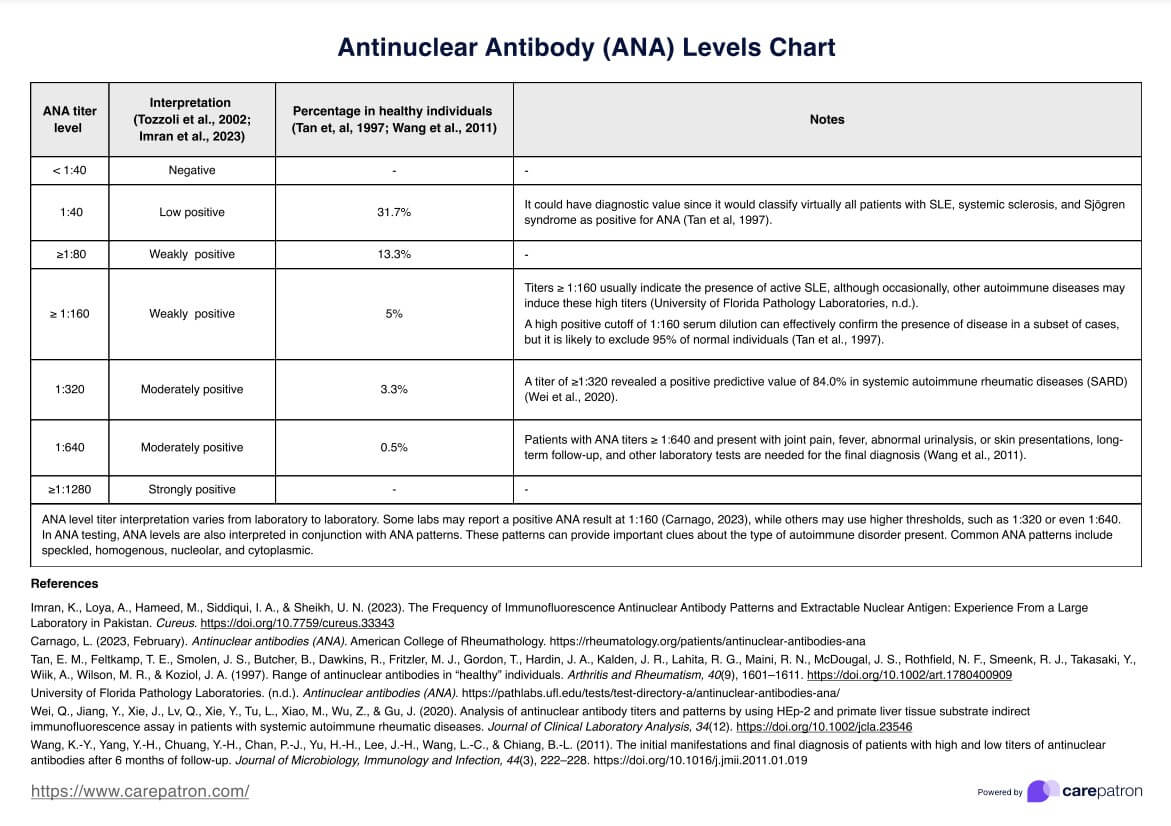There is no specific ANA level considered high, as it can vary depending on the lab and testing method used. A positive ANA test result is usually reported in titer levels and ANA patterns, which can range from 1:40 to 1:1280 or higher. A high ANA level may indicate the presence of autoimmune disease, but further testing and evaluation by a healthcare professional is necessary for diagnosis.

ANA Levels Chart
Access a free ANA Levels Chart to make interpreting ANA test results easier. Get the PDF template here.
ANA Levels Chart Template
Commonly asked questions
There is no specific ANA number that indicates lupus. A positive ANA test, along with other diagnostic criteria and symptoms, can lead to a diagnosis of lupus. It is important to note that a positive ANA test does not always indicate an autoimmune disease and may also be present in healthy individuals.
Healthcare professionals use ANA Levels Charts to interpret the results of ANA tests. The charts provide a visual representation of antibody levels and patterns, aiding in identifying specific autoimmune conditions and guiding treatment decisions.
EHR and practice management software
Get started for free
*No credit card required
Free
$0/usd
Unlimited clients
Telehealth
1GB of storage
Client portal text
Automated billing and online payments











